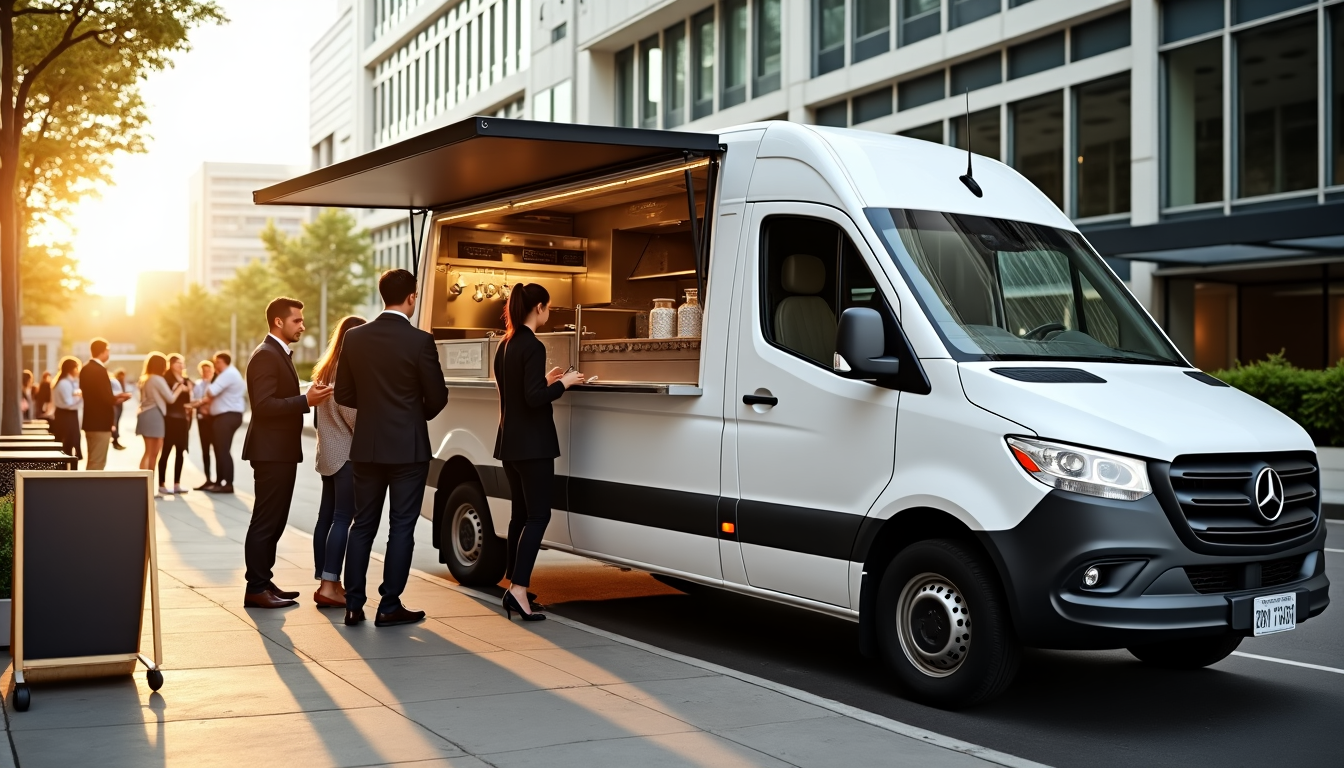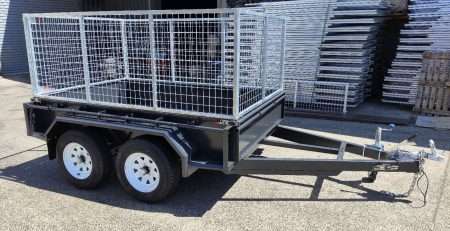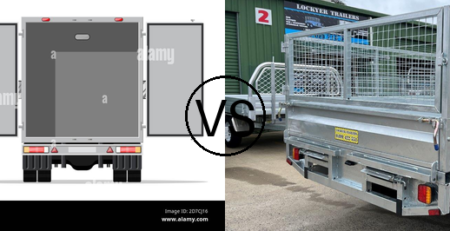
Starting a Food Truck Business in Australia: From Trailer Selection to Launch
The Australian mobile food market has evolved into a billion-dollar industry. This makes a food truck business plan more appealing than ever for aspiring entrepreneurs looking to start a food truck business.
Traditional restaurants need substantial capital. Food trucks provide a lower-risk entry into the food industry. The original investment ranges from $20,000 to $150,000 – substantially less than what you’d spend on a brick-and-mortar restaurant. Understanding food truck start up costs in Australia is crucial for anyone considering buying a food truck.
Food trucks offer compelling advantages through their flexibility. These mobile kitchens have become staples at food truck festivals and events across Australia. Owners can adapt quickly to new food trends and customer needs. But success takes more than just loving to cook and owning a vehicle.
Your food truck business in Australia needs careful planning. We’ll help you navigate everything – picking the right truck, getting necessary permits, finding prime locations, and managing operations. Let’s kick off your first service with a solid food truck business plan!
Planning Your Food Truck Business Model
Starting a successful food truck business in Australia needs careful planning and market analysis. The Australian Mobile Food Vendors Group reports over 5,000 food trucks operating nationwide, showing a thriving and growing market.
Analyzing Market Opportunities in Australia
The street vendor sector shows great potential because customers want high-quality food at competitive prices. Food trucks have become a key part of Australia’s food scene. They serve different groups of people from city centers to beachfronts. Business owners can make money from multiple sources like music festivals, corporate events, local markets, and private functions.
Choosing Your Cuisine and Target Market
Market research shows that people aged 18-34 make up the biggest customer base for food truck products. Your cuisine choice should match local tastes while offering something different. The food truck business model lets you try new food truck business ideas without spending as much as traditional restaurants. Developing a unique selling proposition can give your food truck a competitive advantage in the market.
Creating a Viable Financial Model
A solid financial model is the foundation of your food truck business plan. Original startup costs typically range from AUD 50,000 to over AUD 100,000. Your financial planning should cover:
- Startup Expenses
- Vehicle and equipment: AUD 22,934 to 152,899
- Kitchen setup: AUD 764 to 2,293 monthly for commissary usage
- Branding and wrap: AUD 3,057 to 7,644
Food trucks usually achieve an 8% profit margin, so running efficient operations matters greatly. Your financial model should consider seasonal changes, as summer months bring more foot traffic and sales. You need to include contingency funds and working capital to keep operations running through the first few months.
Successful food truck owners use driver-based financial planning to connect financial results with resources like personnel, marketing budgets, and equipment. This method helps predict outcomes and guides business decisions for long-term growth. Creating accurate financial projections and sales forecasts is crucial for your food truck business plan.
Selecting and Equipping Your Food Truck
Your food truck business plan’s life-blood starts with picking the right vehicle and equipment. This decision affects both your original investment and how well your business does in the long run.
New vs Used Food Truck Considerations
A new food truck costs between AUD 76,449 and AUD 152,899. We focused on new trucks because they come with warranties, custom options, and lower maintenance costs. They last longer and don’t have hidden mechanical issues.
You can get a used food truck for AUD 20,000 to AUD 50,000. Notwithstanding that, repair costs can climb faster, and major fixes might set you back AUD 6,115 to AUD 18,347. Lost revenue during repairs could reach AUD 10,702 – AUD 53,514 weekly.
Essential Kitchen Equipment Checklist
Your mobile kitchen needs the right equipment to succeed. A simple setup has:
- Cooking Equipment: Ranges, grills, and fryers (AUD 7,644 – AUD 22,934)
- Refrigeration Units: Upright freezers and reach-in refrigerators (AUD 3,822 – AUD 7,644)
- Food Prep Stations: Stainless steel work tables, cutting boards, and knife racks
- Storage Solutions: Shelving units and containers for ingredients
Mobile Kitchen Layout Optimization
The quickest way to boost productivity comes from a smart layout in your limited space. The “Work Triangle” concept works best when you place the sink, stove, and refrigerator for smooth workflow. Wall and ceiling space can be used effectively with vertical storage solutions.
Your food truck design should start with the entrance, exit, and serving hatch placement. The extraction units, cookers, and refrigeration equipment come next. Staff need safe paths to move around, and proper ventilation systems must fit into your layout.
Specific stations for different tasks help streamline your operation. Your team can work without getting in each other’s way when tasks are organized well. Smart equipment placement cuts down unnecessary movement and ended up making service quicker with happier customers.
Navigating Legal Requirements
Legal compliance is the foundation of a successful food truck business in Australia. You need to understand and follow regulatory requirements to protect your business and keep operations running smoothly.
Food Truck Licenses and Permits Guide
You need to register with your local council and get specific permits to start your operations. We registered with the council where our vehicle is garaged. You might also need approvals from other councils where you want to operate.
You must have these permits:
- Food Business License
- Mobile Food Vending Permit
- Trade Waste Permit (specifically for Sydney operations)
- Vehicle Registration Documentation
- Food Safety Supervisor Certification
Health and Safety Compliance
Food safety regulations require specific protocols. Your food truck must keep cold foods at 5°C or below and hot foods at 60°C or above. Environmental Health Officers inspect businesses at least once every year. Your business needs a certified Food Safety Supervisor if you serve ready-to-eat foods.
Your operational plan should include:
- Food handling and storage protocols
- Waste management systems
- Cleaning and sanitization schedules
- Temperature monitoring records
Insurance Requirements for Mobile Food Vendors
A complete insurance portfolio will protect your food truck business from risks of all types. Public liability insurance covers claims up to AUD 30.58 million for injuries or damages from your operations. Your insurance coverage should include:
Commercial motor insurance protects you from vehicle damage and road accidents. Business interruption insurance can protect your revenue during unexpected closures or disasters, though it’s optional. Make sure your policy covers food safety risks and potential customer claims before you finalize it.
You could face penalties up to AUD 168,188.93 if you don’t comply with regulations. Regular reviews of documentation and staff training help maintain compliance with all legal requirements. Note that requirements vary between states, so learn about local regulations before expanding your operations.
Setting Up Operations Systems
Quick and smooth operations are the backbone of any successful food truck business. A well-laid-out setup will give a smooth daily operation and promote eco-friendly growth.
POS and Payment Processing Solutions
Food trucks today need payment processing systems that work even when internet connections fail. Square, a leading point of sale provider, offers free POS software with transaction fees of 2.6% + 10¢ per transaction. We tested systems that work offline, which lets you process payments even during network issues.
Note that your POS system should include:
- Immediate sales tracking
- Menu customization capabilities
- Automated inventory updates
- Digital receipt options
Inventory Management Strategies
Food truck operators need precise control over perishable and non-perishable items. The industry standard shows COGS (Cost of Goods Sold) should stay around 25% of total sales. Without doubt, a First-In-First-Out (FIFO) system cuts waste and maintains food quality.
A resilient inventory tracking system monitors ingredients, watches expiration dates, and automates reordering. Good stock management helps owners reduce waste, maximize storage space, and keep food quality consistent. Regular checks spot problems and help adjust par levels based on what sells best.
Staff Training and Management
Professional training programs are the foundations of food safety compliance. Your food handling staff needs to complete government-approved Food Handler training to meet Standard 3.2.2A. The Food Safety Supervisor course, which stays valid for five years, gives staff vital knowledge about food safety procedures and HACCP principles.
Your management team performs best when you focus on:
- Customer service excellence through real-life scenarios
- Quick operations through hands-on practice
- Clear team communication channels
Staff stays longer with positive feedback and clear expectations. Detailed training programs covering menu items, food prep techniques, and customer service skills help maintain quality. Regular evaluations and feedback sessions keep operational standards high and promote professional growth.
Location and Event Strategy
Choosing the right spots and building relationships with event partners can make or break a food truck business plan. Food truck owners can boost their earnings at different venues year-round with smart planning and market research.
Finding Prime Vending Locations
Your chosen spot directly affects your earnings. Weekly income ranges from AUD 8,002 to AUD 9,369 based on the local population. Food trucks succeed most in areas with lots of people walking by, easy-to-spot locations, and simple access.
Key location considerations include:
- Office districts and business parks for lunch crowds
- Universities and educational institutions
- Public parks and recreational areas
- Popular nightlife districts
- Local markets and shopping centers
- Gas stations for travelers and workers on-the-go
Food trucks do best in areas that don’t have many dining options. Yes, it is worth noting that some cities don’t allow food trucks within 200 feet of restaurants. You need to research locations carefully to follow these rules.
Building Relationships with Event Organizers
Strategic collaborations help food truck owners get the best spots at festivals, markets, and community events. Event participation is a great way to get exposure to new customers. Building strong connections with organizers becomes vital to long-term success.
The best partnership opportunities come from:
- Breweries looking for food vendors
- Farmers’ markets showcasing local ingredients
- Corporate event planners
- Festival organizers
- Local business associations
Strong relationships grow when you bring value to your partners. To name just one example, some trucks share their sales with venue owners or support local charities.
Seasonal Location Planning
Weather changes affect where and when food trucks operate. You should stay flexible with your location strategy until you understand local patterns.
Food trucks adjust their locations based on:
- Weather that affects outdoor dining
- Local event calendars and festivals
- Holiday celebrations and special occasions
- Tourist seasons in different areas
- School terms and university schedules
A successful seasonal plan needs a flexible schedule that prepares for busy times. Regular updates to customers about location changes help build loyalty. Many trucks use social media marketing to share schedule changes and event appearances.
Food trucks in Sydney, Melbourne, and other major Australian cities can find opportunities all year at different venues. Seasonal changes can hurt your earnings without proper planning. Build a resilient event calendar right after finding your regular spots to keep business steady throughout the year.
Conclusion
A food truck business in Australia is a great way to enter the food industry with less risk than opening a traditional restaurant. The market continues to grow, and flexible operations create great opportunities to succeed.
Good planning is vital – from picking the right equipment and getting permits to setting up efficient systems. Your food truck business plan needs solid research, and strategic locations will help you maximize revenue throughout different seasons and events.
Running a food truck takes commitment, flexibility, and a sharp eye for legal requirements. You need to maintain high food safety standards, manage operating expenses well, and build strong relationships with event organizers to succeed in the long run.
Food trucks across Australia show they can be highly profitable with proper management. The secret is finding the right balance between efficient operations and quality service while adapting to market changes and customer priorities.
Your path to success takes time – you’ll need consistent work, regular tracking of performance, and flexibility to change strategies based on what the market tells you. With the right approach and execution, your food truck can thrive in Australia’s evolving food scene.
FAQs
Q1. How profitable are food trucks in Australia? Food trucks in Australia can be quite profitable, with potential for strong revenue. Profitability depends on factors such as location selection, unique cuisine offerings, effective marketing strategy, and efficient operations. While success isn’t guaranteed, many food truck owners have found it to be a lucrative business venture. The average food truck income in Australia varies, but with a solid business plan, it can be a profitable enterprise.
Q2. What are the initial steps to start a food truck business in Australia? Starting a food truck business in Australia involves several key steps. First, research and obtain necessary licenses and permits from local councils. Then, register your business and determine your food business classification. Next, familiarize yourself with the Food Standards Code. Finally, secure appropriate insurance coverage and develop a comprehensive food truck business plan. Understanding how to open a food truck in Australia is crucial for success.
Q3. What’s the typical cost of starting a food truck in Australia? The cost of starting a food truck in Australia can vary widely. A new food truck typically costs between AUD 76,000 and AUD 305,000, depending on size and features. Additional expenses include equipment, licenses, permits, and initial inventory. The total investment can range from AUD 50,000 to over AUD 100,000, making it a more affordable option compared to opening a traditional restaurant. Food truck start up costs in Australia should be carefully considered in your business plan.
Q4. Do food trucks have to pay for their vending locations? Yes, food trucks generally need to pay for their vending locations. This can include fees for permits to operate in specific areas, rent for spots at events or markets, or a percentage of sales to property owners. The cost varies depending on the location’s popularity and the duration of stay. In Melbourne, for example, the food truck license cost can vary based on the specific area and duration of operation.
Q5. What are some effective strategies for choosing food truck locations? Successful food truck location strategies include targeting high foot traffic areas like office districts, universities, and popular nightlife spots. Participating in local events, festivals, and markets can also be beneficial. It’s important to research local regulations, as some cities have restrictions on where food trucks can operate. Additionally, building relationships with event organizers and adapting to seasonal changes can help secure prime vending spots throughout the year. A well-thought-out location strategy is a key component of any food truck business plan.
Author
I am Rahatul Ashiq Tamal. Another author of Muscle Trailers. Muscle Trailers is a well-known trailer brand in Sydney, Melbourne & Adelaide

How to Mount a Spare Tire on Your Trailer: A Simple Step-by-Step Guide
Trailer service centers receive over 1 million phone calls and 1.3 million emails each year about trailer maintenance problems....

How to Fix RV Roof Leaks: Simple Roof Leak Detection Guide for Beginners
Did you know DIY RV roof repairs can cost under $50? But undetected leaks could lead to substantially higher repair...

Box Trailers vs Flatbed Trailers: Which Gives More Value in 2025?
The choice between box and flatbed trailers can greatly affect your investment's long-term value. Box trailers deliver impressive capabilities. Top...
